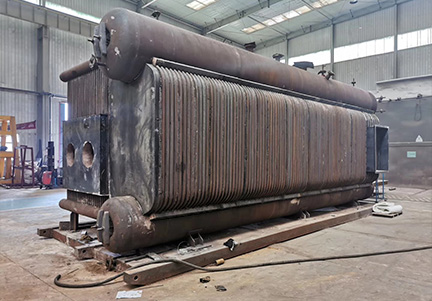Steam Boilers for Food Processing Industry Applications and Efficiency Considerations
Steam Boilers for Food Factories Essential Components for Efficient Production
Steam boilers are vital in the food manufacturing industry, providing an indispensable source of energy for various processes. Their applications range from cooking and sterilization to heating and drying. In this article, we will explore the significance of steam boilers in food factories, the types available, their operational mechanisms, and safety considerations.
Importance of Steam Boilers in Food Production
In food factories, steam is utilized for several critical functions. Cooking processes, especially for products like soups, sauces, and pastes, require precise temperature control, which steam provides effectively. Additionally, steam is crucial for sterilization—the process of ensuring that food products are free from harmful microorganisms. This is especially important in industries such as dairy, meat processing, and canned foods, where hygiene is paramount.
Moreover, steam is used in HVAC systems to maintain optimal temperature and humidity levels in production areas, while also serving for cleaning and sanitation purposes within the facilities. The versatility of steam in these applications not only improves efficiency but also enhances product quality and safety.
Types of Steam Boilers
There are several types of steam boilers commonly used in food factories, and selecting the right one depends on specific production needs and facility layouts.
1. Fire-tube Boilers These boilers are designed with a series of tubes that carry hot gases from the combustion process. The heat is transferred to water surrounding the tubes, leading to steam production. Fire-tube boilers are known for their simplicity and relatively low initial investment, making them a popular choice for smaller food manufacturers.
2. Water-tube Boilers In contrast to fire-tube boilers, water-tube models have water-filled tubes that the hot gases pass through. This design allows for higher pressure capabilities and efficiency, which can be beneficial for larger operations requiring significant steam output.
3. Electric Boilers These boilers use electrical resistance or electric arcs to generate steam. While they are cleaner and require less maintenance, they may not be as cost-effective for large-scale applications compared to traditional fuel-burning boilers.
4. Biomass Boilers As sustainability becomes a growing concern in the food industry, biomass boilers are gaining popularity. These boilers utilize organic materials—such as wood pellets or agricultural residues—as fuel, making them an environmentally friendly option for generating steam.
steam boiler for food factories

Operational Mechanisms
Steam boilers operate on a straightforward principle water is heated to create steam, which is then directed to where it is needed in the production process. The key components of a typical steam boiler include the burner, combustion chamber, heat exchanger, steam drum, and control system.
The burner ignites the fuel, producing hot gases that pass through the combustion chamber, where they transfer their heat to the water. This process continues until the water reaches the desired temperature and pressure, at which point the steam is directed into the factory’s piping system for use.
Safety Considerations
Given the high-pressure operation of steam boilers, safety is of utmost importance in food factories. Regular maintenance and adherence to safety regulations are essential to prevent accidents and ensure the boiler operates efficiently. Key safety practices include
- Routine Inspections Regular checks of the boiler system help identify potential issues before they escalate, including corrosion, leaks, or pressure irregularities.
- Pressure Relief Valves These devices are crucial for preventing over-pressurization and can help avert catastrophic failures.
- Training Personnel operating or maintaining steam boilers should be properly trained in their use and in emergency procedures, ensuring a swift response in case of malfunctions.
Conclusion
Steam boilers play a critical role in food factories, supporting a wide array of processes that are essential for producing high-quality food products. The choice of boiler type should be aligned with operational needs, while ensuring safety measures are strictly followed. As the food industry continues to evolve, investing in advanced steam boiler technologies will be vital for improving efficiency and sustainability in production practices.
-
Industrial Steam Boiler Corporation - Reliable Industrial Boiler Manufacturer & SupplierNewsJul.08,2025
-
High-Efficiency Steam Boiler Heat Exchanger Supplier & Factory Durable Products for IndustryNewsJul.08,2025
-
Premium Electric Steam Boiler Manufacturer Reliable Company & Factory SolutionsNewsJul.08,2025
-
Commercial Hot Water Boiler - Reliable Supplier & Factory Direct Price for Efficient Heating SolutionsNewsJul.07,2025
-
Top Hot Oil Boiler Manufacturer - Reliable Thermal Oil & Coal Fired Boiler Manufacturer ManufacturerNewsJul.07,2025
-
High-Efficiency Hotel Hot Water Boiler – Leading Exporters & Quotes for HotelsNewsJul.07,2025

